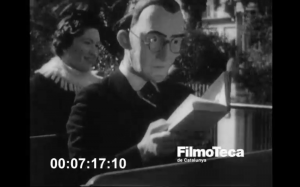
(Catalan): Història d'un home que es creu important, que està carregat de prejudicis i que duu una màscara per mostrar una aparença de persona seriosa i culta. Però quan se la treu, en la intimitat, deixa de fingir i és feliç. Un dia, al tramvia, coneix una noia que l'ajuda a desprendre's de la màscara que porta gairebé sempre posada.
Story of a man who acts as if he is important and who wears a mask to show the appearance of a serious and cultured person. But when he takes it out, in the intimacy of the home, he stops pretending and is able to relax and be happy. One day, on the tram, he meets a girl who helps him get rid of the mask by cutting loose of all of his prejudices. [Description from the Filmoteca de Catalunya catalog]
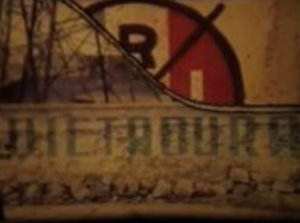
"La película realizaba un montaje lúdico al yuxtaponer los mensajes políticos oficiales escritos en las bardas de la ciudad con imágenes o textos que los ironizaban o alteraban su sentido. El título viene de un juego de palabras con el fraseo de las sílabas "Mé-xi-co" / jí-ca-ma", que solían usarse entonces como porra en los partidos de fútbol de la selección nacional" (Vázquez Mantecón, 2012).
"The movie had a playful montage by juxtaposing official political messages written in walls around the city with images or text that ironized them or altered their meaning. The title comes from a word game that played with the phrasing of the syllables "Me-xi-co / ji-ca-ma", a popular chant during the national team soccer games of the time" (Vázquez Mantecón, 2012).
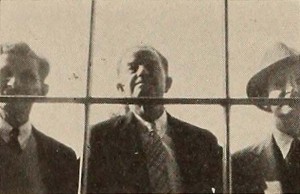
"In their adroitly handled John Doe, Citizen, Frances Christeson and Harry Merrick have produced a photoplay of politics in city government that can be compared to a theatrical picture in dramatic values and clarity of treatment. Designed to teach students the value of the vote, the danger of neglecting to understand the issues in city affairs and some of the methods by which machine politicians keep themselves in power, this picture also shows how well amateurs can handle a serious film in dramatic form. Particularly notable, from the movie maker's viewpoint, is how cleverly and effectively the producers have circumvented such apparently insurmountable problems as showing a crowded town meeting in a large auditorium, night airplane shots of rows of homes with lighted windows and the construction of a new sea wall on the city's waterfront. Needless to say, these sequences were not handled by means of large studio sets and hundreds of extras; but they are just as effective as if they had been, and therein lies the genius of these remarkable movie makers." Movie Makers, Dec. 1938, 597.
"A fictional account of an election as it might occur in a small city. Illustrates the indifference of the average citizen to public affairs and emphasizes that if the government is not run by the people the government will run them." Educational Film Guide, 1953, 367.
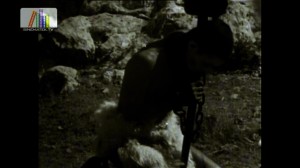
“Ruhi Su ve Rahmi Saltuk türküleri eşliğinde yoksulluk ve emek sömürüsünü ve mücadeleyi, direnişi farklı, ilginç bir kurgu ile anlatmış. 13 dakikalık 1969 yılı koşullarını düşünerek izlemek gerekiyor.” Sinematek.tv: http://sinematek.tv/kordugum-1969-2/ (15 Oct 2019).
“Accompanied by Ruhi Su and Rahmi Saltuk’s folk songs, the film tells the story of poverty, struggle, and resistance in a different way, with an interesting montage. This 13-minute-long film requires audiences to acknowledge the contexts of the year 1969 in viewing.” Sinematek.tv: http://sinematek.tv/kordugum-1969-2/ (15 Oct 2019).
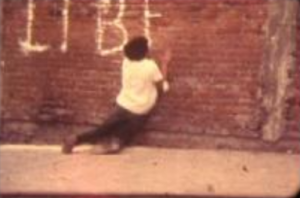
"El relato iniciaba con la presentación de un grupo de jóvenes que corren de manera desesperada por las calles de la ciudad, presumiblemente perseguidos por la policía. Inexplicablemente, dada la urgencia de la huída, uno se detiene a escribir en una barda la palabra "Libertad". No lo consigue, porque una bala lo derrumba cuando apenas va en "Libe...". (de ahí el título de la película). [...] La película apenas muestra una esperanza posible en la lucha por la libertad. Después del acoso y el acecho, todos los jóvenes que han protagonizado la historia mueren por una bala anónima de una fuerza represiva que no alcanza a tener un rostro definido" (Vázquez Mantecón, 2012).
"The story began with the presentation of a group of young people that run desperately throughout the city streets, presumably they are being chased by the police. Inexplicably, given the urgency of the escape, one of them stops to write the word "Freedom" on a wall. He fails, because a bullet overthrows him when he has barely written "Freed.." (hence the title of the film). [...] The film barely shows hope for the struggle for freedom. After the harassment and the siege, all the young people that starred the film are murdered by an anonymous bullet of a repressive force that does not have a defined face" (Vázquez Mantecón, 2012).
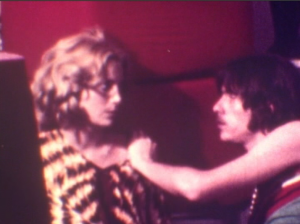
"Luz externa fue una de las producciones más ambiciosas del súper 8 mexicano. El guión se basaba en el monólogo de Ernesto, un machín jipiteca, que relata a un amigo las peripecias con su novia Raquel. Posteriormente el guión sirvió como la base del cuento con el mismo título que apareció como parte del libro El rey se acerca a su templo. Tanto la película como el cuento se abocaban a describir el abanico amplio de la juventud clasemediera urbana contracultural que había aparecido a fines de los años sesenta y principios de los setenta: los macizos que acceden al consumo de drogas, las muchachas de buena familia que se acercan a ese mundo, los nuevos conversos a la revolución social o los intelectuales que participan del ambiente con simpatía" (Vázquez Mantecón, 2012).
"Luz externa [External light] was one of the most ambitious productions of the Mexican super 8. The script was based in the monologue of Ernesto, a 'machin' hippie, that tells a friend about his adventures with his girlfriend Raquel. The script served later as the base for a short story with the same title that appeared as part of the book El rey se acerca a su templo [The king approaches his temple]. Both the movie and the short story described the wide range of the middle class urban countercultural youth that emerged at the end of the sixties and the beginning of the seventies: the strong men that had access to drugs, the girls from good families that entered that world, the new converts to social revolution or the intellectuals that sympathize with that ambiance" (Vázquez Mantecón, 2012).
A short film dealing with the subject of class inequality in England.
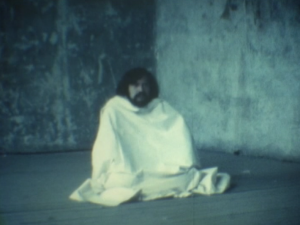
"Two Visual Arts students of the San Carlos Academy find themselves embroiled in contradictions, spiritual inclinations and concerns about the political and social conditions of Mexico, which puts them in a quandary about what stance to take in the Student Movement of 1968." Ambulante.
"Hacía un alegato sobre lo que sucede al otro lado de la tranquilidad de la vida burguesa. Se alternaban imágenes de placidez doméstica de la clase media con escenas de la guerra de Vietnam y las rebeliones estudiantiles de la época. Al final de la cinta, sobre la fotografía de un mitin en Tlatelolco, una pregunta: "saber, darse cuenta, ¿cuándo?" "(Vázquez Mantecón, 2012).
"It was an allegation about what happens at the other side of the bourgeois life tranquility. Images of middle class house placidity were alternated with scenes from the Vietnam war and the students' rebellions of the time. At the end of the film, over the photography of a political rally in Tlatelolco, a question: "to know, to notice, when?" " (Vázquez Mantecón, 2012).
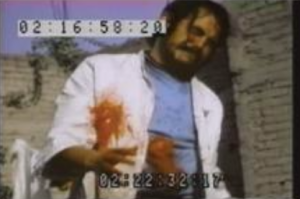
"El paletero cuenta la historia de un vendedor de helados y paletas (Héctor Suárez) que recorre las calles de la ciudad. Es simpático: juega volados con los niños, conversa amistosamente con una criada que ha salido a la calle para hacer el mandado (July Furlong). De pronto un grupo de policías judiciales, vestidos de civil, deciden acosarlo. Se acercan intimidantes a la pareja. Rompen los conos de galletas para helado. El paletero siente pánico y huye por las calles de la ciudad. Es perseguido por los judiciales. Intenta esconderse en las ruinas de una casa abandonada, donde es seguido por uno de los policías. Luchan y el paletero consigue quitarle la pistola. Amenaza al policía y reemprende la huída. Al final encuentra un nuevo escondite en una vecindad. Presa del pánico, el paletero dispara sobre sus perseguidores, hiriendo a dos. Los policías lo ejecutan, y de paso matan a un niño que jugaba en el patio de la vecindad y que había quedado situado en medio del tiroteo" (Vázquez Mantecón, 2012).
El paletero [The popsicle man] tells the story of an ice cream and popsicles seller that goes around the city streets. He is nice: he plays coin toss with children, talks kindly with a maid that has left the house to run some errands. Suddenly a group of policemen, dressed as civilians, decide to harass him. They approach the couple in an intimidating manner. They break the ice cream cones. The popsicle man feels panic and runs away through the city streets. He is chased by policemen. He tries to hide in the ruins of an abandoned house, where he is followed by one of the policemen. They fight and the popsicle man takes his gun. He threatens the policeman and starts running away again. At the end he finds a new hiding spot in a vicinity. Overcome by panic, the popsicle man shoots wounding his persecutors. The policemen execute him, and they also kill a child of the neighborhood that was caught up between the shooting" (Vázquez Mantecón, 2012).
Total Pages: 3